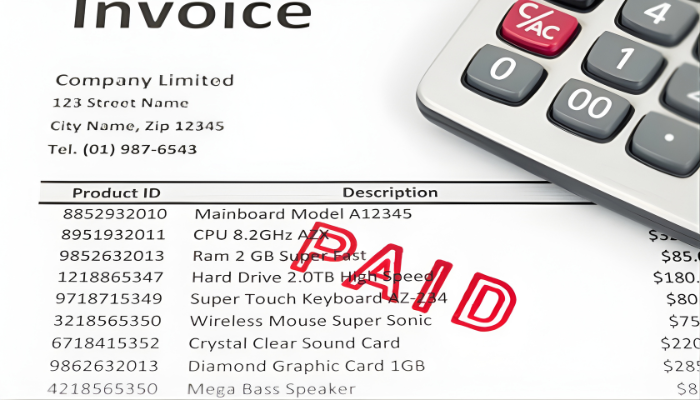
The Employee Retention Credit (ERC) was a lifeline for many businesses during the COVID-19 pandemic. However, new IRS updates show that navigating ERC compliance is more complicated than it once seemed. The IRS is now carefully reviewing ERC claims, urging businesses to reassess their submissions. No one wants an audit, penalties, or to repay funds already received, which is why it’s essential to understand the changes and take action to safeguard your business.
In this blog, we'll break down the latest IRS guidance, highlight key red flags to watch for, and explore tools to help you stay on the right side of compliance. We promise to keep it informative and even a little fun—because who says financial topics have to be boring?
ERC Compliance: The Game Has Changed—Here’s Why It Matters
If you thought your ERC claim was a done deal, think again. The IRS has resumed processing claims, but this time, with heightened scrutiny. More than 85% of ERC claims are now flagged as "medium" or "high risk," meaning most businesses, including yours, could face extra review.
What Does This Mean for Your Business?
- A Closer Look at Your Claim: While the IRS is prioritizing lower-risk claims, if your claim falls into the medium or high-risk category (as many do), expect a more detailed review. The IRS is focused on ensuring every claim is accurate, especially after finding common errors.
- It’s Not Too Late to Fix Mistakes: If you think your claim has mistakes, don’t worry—there’s still time. The IRS allows businesses to correct or withdraw incorrect claims before penalties are assessed.
- The Cost of Inaction: Ignoring potential issues could lead to audits, fines, or even the dreaded task of repaying ERC funds you’ve already received. It’s smart to act now and avoid bigger problems later.
Now that we’ve covered why you should revisit your ERC claim, let’s look at the specific red flags the IRS has recently identified. These could put your business at risk if left unchecked.
Download our free Intro to Factoring Guide and unlock cash flow at your business today >>
Five New IRS Red Flags That Could Spell Trouble for Your ERC Claim
So, what exactly is the IRS looking for? Recently, they identified five new warning signs that could mean trouble for businesses with pending or even approved ERC claims. Here's what to keep in mind:
- Wages for Family Members: If you run a family business, you may have claimed wages for relatives. However, the IRS does not consider family wages eligible for the ERC. Double-check to ensure you’ve only claimed qualifying employees.
- Double-Dipping with PPP: Did you use the same wages for both ERC and Paycheck Protection Program (PPP) loan forgiveness? The IRS won’t allow double claims, so make sure these wage reports are separate.
- Government-Ordered Shutdown: If your business didn’t actually close due to a government order, your claim could be questioned. The IRS is paying close attention to businesses that cannot provide solid proof of government-mandated shutdowns.
- Employees Working During a Shutdown: Even if your office was physically closed, if employees were still working remotely or providing services, your shutdown claim might be challenged.
- Essential Businesses Without Revenue Decline: Some essential businesses were misled into believing they qualified for the ERC, even though their revenues didn’t decline. If this sounds like your situation, revisit your claim.
Spotting these red flags is just the first step. Next, we’ll look at what you can actually do about them to safeguard your business.
How to Navigate These Changes Like a Pro
While all this talk of IRS scrutiny might sound intimidating, the good news is that there are plenty of steps you can take to protect your business. Start by reviewing your ERC claims with a qualified tax professional who can help you spot any red flags. The IRS has even reopened its Voluntary Disclosure Program, allowing businesses to correct or withdraw incorrect claims with fewer penalties.
Being proactive now can save you from headaches (and hefty fines) down the road. Whether it’s ensuring your claims are backed by proper documentation or simply getting a second opinion, taking action today will help you stay ahead of potential compliance issues.
But what if your ERC claim has already hit a snag? That’s where the IRS Fast Track Program might come in handy.
The IRS Fast Track Program: Speeding Up Dispute Resolutions
If your ERC claim is caught up in disputes or facing a lengthy appeal, the IRS Fast Track Program could be a helpful alternative. Fast Track is a voluntary mediation program offered by the IRS that helps businesses resolve tax disputes quicker than the traditional appeals process. If you're in a situation where the IRS has flagged your ERC claim or there are unresolved issues, Fast Track could be an ideal solution to avoid a lengthy appeal.
Here’s how it can save you time, money, and maybe even a few gray hairs:
- Mediation with an IRS Official: Fast Track brings in an independent mediator from the IRS's Office of Appeals who will assist in discussions between you and the IRS to help reach an agreement. Best part? The mediator might even offer some settlement ideas to speed things along.
- No Pressure: Fast Track participation is voluntary, and neither you nor the IRS is required to accept the mediator’s settlement proposals, keeping you in control.
- Fast, Flexible, and Cost-Effective: By choosing this path, you could resolve your case faster, at a lower cost, and with greater flexibility than going through the full appeals process. While traditional appeals can drag on for months—or even years—Fast Track is designed to resolve disputes in as little as 60 to 120 days. That’s a win for your business and your bottom line.
If Fast Track doesn’t help lead to a resolution, don’t worry—you still have the right to request a traditional appeal or even file a lawsuit if necessary. However, many small businesses find that this process saves them time and money, giving them peace of mind and a quicker resolution to disputes. But why wait if you don’t have to?
The ERC Eligibility Checklist: Are You Still Eligible?
ERC rules have evolved, and ensuring your eligibility is more important than ever. To simplify things, the IRS has provided an Employee Retention Credit Eligibility Checklist. This tool helps you assess whether your business qualifies for the credit and confirms that your claims meet IRS standards.
Here’s a simplified version of what the IRS looks for:
- Did your business operate during the eligibility periods? To qualify, your business must have paid wages to employees between March 13, 2020, and December 31, 2021. Household employers are excluded.
- Government Shutdown or Revenue Decline? If your business was shut down or faced significant revenue losses during this period, you may be eligible. Be prepared to provide thorough documentation, such as wage records, gross receipts, and copies of government orders.
- Did you claim wages that are also being used for PPP loan forgiveness? Double-check to make sure you didn’t claim wages for both PPP loan forgiveness and the ERC. The IRS doesn’t allow double-dipping.
If any of these situations apply to you, or if you’re unsure, it’s a good idea to revisit your ERC claim with a tax professional. You can find more detailed guidance and frequently asked questions on the IRS ERC Eligibility Checklist.
Ready to solve your cash flow problems? Get a free, no obligation factoring quote today >>
How to Stay Ahead and Keep Your Business Safe
As the IRS continues to fine-tune its focus on ERC compliance, staying informed is your best defense. Reviewing your claims, tapping into the IRS Fast Track Program, or using the ERC Eligibility Checklist are just a few ways to ensure your business remains compliant and financially secure.
At Factor Funding, we understand that adapting to evolving ERC guidelines can be tricky, but managing your business’s financial health shouldn’t be. Our flexible funding solutions are designed to keep your cash flow steady so you can focus on what matters most—growing your business. Beyond financing, we’re here to provide practical insights and guidance to help you stay ahead of challenges. Stay connected for more resources to keep your business thriving.




.png?width=700&height=400&name=Factor%20Funding%20-%20ERC%20Guidelines%20IRS%20Fast%20Track%20(1).png)
















